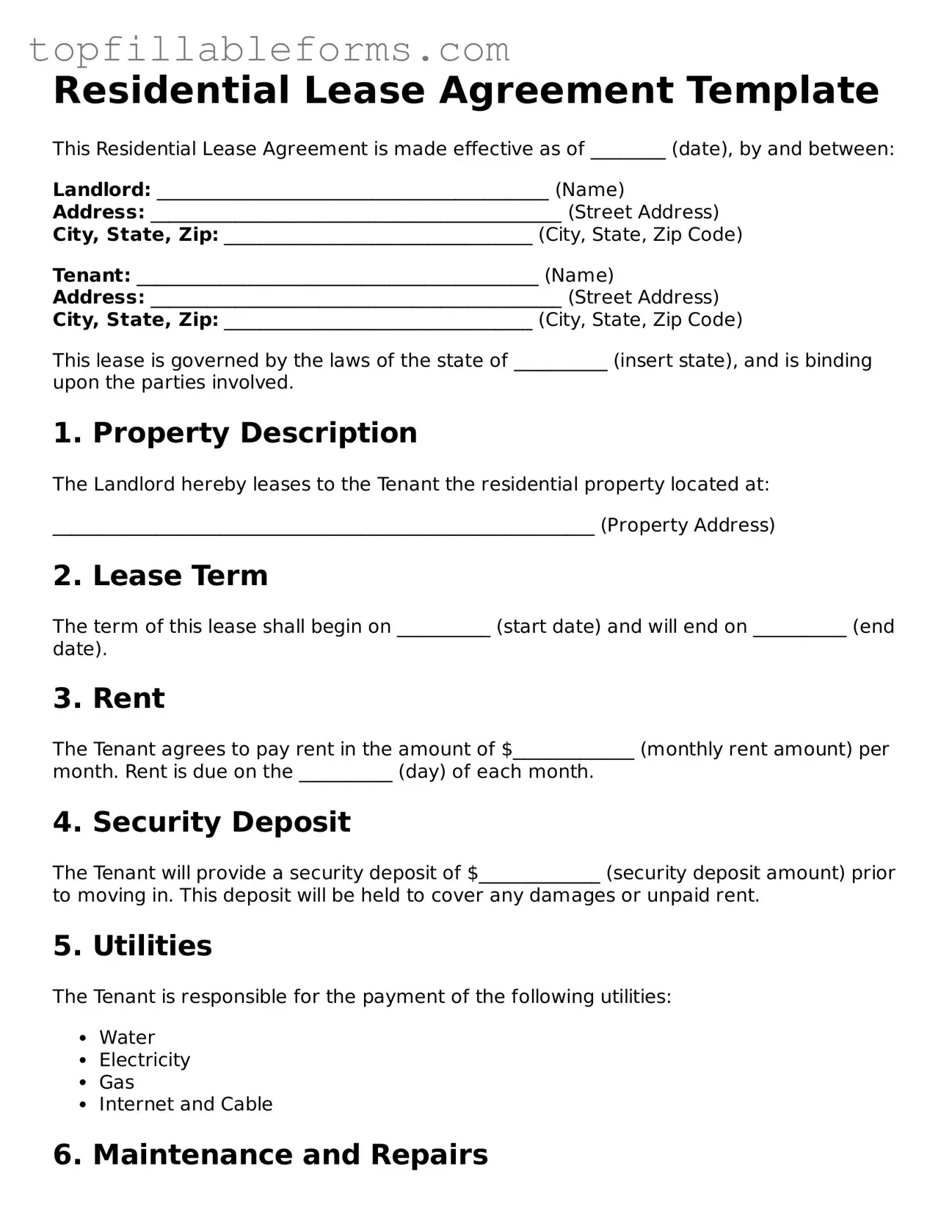Residential Lease Agreement Template
This Residential Lease Agreement is made effective as of ________ (date), by and between:
Landlord: __________________________________________ (Name)
Address: ____________________________________________ (Street Address)
City, State, Zip: _________________________________ (City, State, Zip Code)
Tenant: ___________________________________________ (Name)
Address: ____________________________________________ (Street Address)
City, State, Zip: _________________________________ (City, State, Zip Code)
This lease is governed by the laws of the state of __________ (insert state), and is binding upon the parties involved.
1. Property Description
The Landlord hereby leases to the Tenant the residential property located at:
__________________________________________________________ (Property Address)
2. Lease Term
The term of this lease shall begin on __________ (start date) and will end on __________ (end date).
3. Rent
The Tenant agrees to pay rent in the amount of $_____________ (monthly rent amount) per month. Rent is due on the __________ (day) of each month.
4. Security Deposit
The Tenant will provide a security deposit of $_____________ (security deposit amount) prior to moving in. This deposit will be held to cover any damages or unpaid rent.
5. Utilities
The Tenant is responsible for the payment of the following utilities:
- Water
- Electricity
- Gas
- Internet and Cable
6. Maintenance and Repairs
The Tenant agrees to keep the property in good condition. The Landlord is responsible for major repairs, unless damage is caused by the Tenant's actions.
7. Alterations
The Tenant shall not make any alterations to the premises without the written consent of the Landlord.
8. Termination
Either party may terminate this lease by providing written notice __________ (number of days) days before the lease end date.
9. Governing Law
This Lease Agreement shall be governed by and construed in accordance with the laws of the state of __________ (insert state).
IN WITNESS WHEREOF, the parties hereto have executed this Lease Agreement as of the date first above written.
Landlord Signature: ________________________________
Date: _____________________________________
Tenant Signature: ________________________________
Date: _____________________________________
